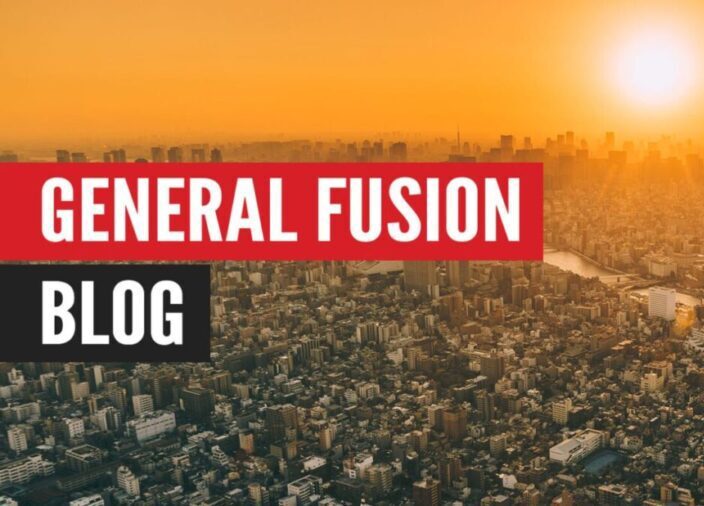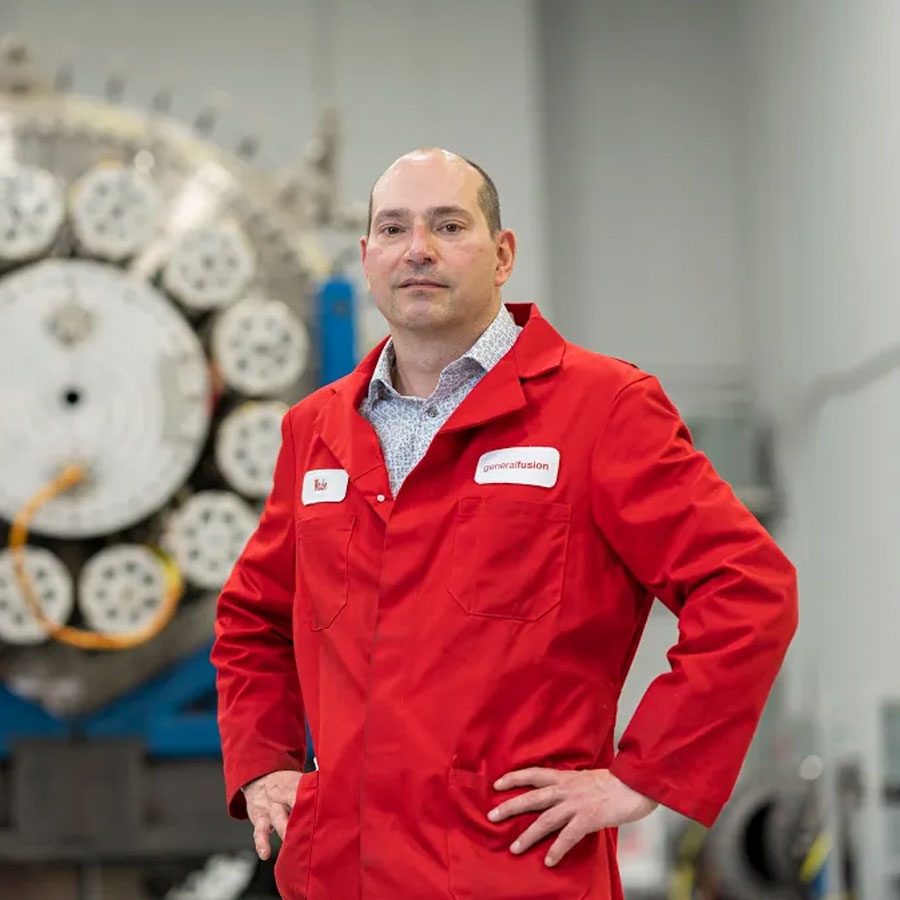On December 5 of 2022, the team at the Lawrence Livermore National Lab shot 192 high-powered lasers at a manufactured fuel pellet. The power of the lasers caused the deuterium and tritium atoms within the pellet to fuse and ignite, marking a milestone the fusion energy community has been chasing for decades – scientific net gain. Media activity was rampant, and a little astonished because isn’t fusion energy always 20 years away?
Here at General Fusion, we weren’t surprised. For those of us working in the industry, we knew that it was only a matter of time before ignition was achieved and that it would be the result of long-term incremental progress rather than a single “eureka!” moment. With Lawrence Livermore’s announcement, the world has taken a renewed interest in fusion energy and the variety of methods businesses are pursuing to generate fusion power for the grid. With this scrutiny comes a valid question – how will fusion be commercialized?
To properly explain why General Fusion’s Magnetized Target Fusion makes sense as the best approach for commercial fusion energy, we need to provide a primer on the other most talked about technologies.
First up is magnetic confinement. Arguably the most studied form of magnetic confinement is the tokamak, an approach that forms a plasma in a donut shape, then keeps it there in perpetuity. To do this requires expensive superconducting magnets and can take up a lot of space (such as ITER – the multi-national research project based in the south of France).
Next up is inertial confinement or laser fusion – which is demonstrated at the Lawrence Livermore Lab. In the press briefing for the ignition announcement, the researchers explained that the experiment achieved scientific net gain. This means the energy produced when the atoms smashed together was greater than what the laser energy required for the reaction. It is important to note, however, that the overall power required to conduct the experiment (e.g., the electricity needed to power the lasers) was still greater than the energy output. The high-power lasers and expensive fuel pellets required by inertial confinement make it a difficult proposition to commercialize and supply the grid with electricity.
Then there’s Magnetized Target Fusion (MTF), which is what General Fusion is pursuing. Originally conceived in the 1970s by the U.S. Naval research labs, it takes the best components of magnetic confinement and inertial confinement fusion to create a unique technology that is far simpler to commercialize.
“To maintain plasma in a steady state, like tokamaks do, requires gigajoules of energy, which I joke costs giga-bucks,” says General Fusion founder and Chief Science Officer Dr. Michel Laberge. “On the other hand, there’s laser fusion, which was actually the focus of my PhD. It requires high-powered lasers to shoot the fuel pellets, but both the lasers and the pellets are very expensive.
“When I quit my corporate job 20 years ago to form General Fusion, my goal was to find an approach that could generate electricity in a way that would be affordable. That’s why I chose Magnetized Target Fusion. It sits in the middle of both these extremes, making it a much more cost-effective and practical technology to commercialize.”
The best of both worlds
Taking the best of both approaches allows General Fusion to take advantage of pre-existing fusion research and simplify processes to make commercialization easier.
For instance, the magnetic configuration that confines our plasmas is the same as a tokamak, but we form the plasma using a very different method. We puff the plasma into a liquid metal lined chamber, like a smoke ring. From there, high-powered pistons mechanically compress the liquid metal around the plasma, squeezing and building pressure until the plasma reaches more than 100 million degrees Celsius – and fusion occurs. In a commercial setting, the process would repeat every second.
While inertial confinement fusion also compresses fusion fuel to generate energy, this technology uses lasers, and the process must be completed within nanoseconds. Because of the configuration of the magnetic field surrounding our plasma, we can mechanically compress the plasma with pistons on a much slower timescale – taking milliseconds – roughly the same speed as a blink of an eye.
The combination of mechanical compression and the liquid metal that lines our fusion vessel is General Fusion’s true gamechanger. This technology is instrumental in overcoming the barriers to commercialization that other private fusion companies face.
The first barrier to commercial fusion is damage to the machine – often called the ‘first-wall problem’. The neutrons generated in a fusion reaction hit the metal wall causing blistering, chemical erosion, and impurities. Obviously, a power plant needs to run for 40 years and beyond; a degrading machine won’t work. The advantage of the liquid metal wall is that it absorbs these neutrons, preventing damage to the machine.
The second barrier is fuel production. A mixture of hydrogen isotopes, deuterium and tritium fuel most fusion reactions. Deuterium is easy enough to acquire – it can be derived from seawater. Tritium, on the other hand, can only be manufactured. As a result, some naysayers claim the global tritium supply isn’t enough to fuel the burgeoning fusion industry. Here again, General Fusion’s liquid metal wall provides a simple solution. The metal contains lithium, which is transformed into tritium and helium when hit with fusion neutrons. The result is sufficient tritium production to sustain the machine through its lifetime of operations.
The third barrier is energy conversion. Much work has gone into the study of creating fusion energy, but less research has been done on actually getting the energy out of the machine. The liquid metal wall solves this problem too. The fusion neutrons heat the metal, which then circulates through the fusion machine to a heat exchanger, producing steam that will drive a turbine and generate electricity. This is a fully industrialized process used in many modern power plants today.
The final barrier: the brass-tacks costs of creating fusion energy. To get the intense conditions required to create plasmas and fusion reactions, most are using superconducting magnets or high-powered lasers. Both are expensive. Using mechanical compression and liquid metal keeps costs manageable.
Regardless of barriers, the need for zero-carbon energy is undeniable. While the path to generating fusion energy has had twists and turns, the industry is nearing the finish line, and General Fusion is leading the pack.

